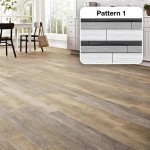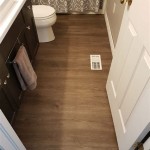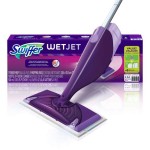Vinyl floating floor is a popular and affordable flooring option for many homeowners. It is a great way to give a room an upgrade without breaking the bank. The vinyl floating floor is an interlocking floor that can be installed over existing flooring, such as hardwood, tile, or linoleum. It is an ideal choice for areas such as kitchens and bathrooms, where moisture is a concern. Vinyl floating floor is also easy to maintain, making it a great choice for busy households. In this article, we will discuss what vinyl floating floor is and its benefits.
What is Vinyl Floating Floor?
Vinyl floating floor, also known as luxury vinyl tile (LVT), is made of a composite material that is composed of several layers of vinyl and a thin layer of fiberglass. The top layer of the LVT is a wear layer that is resistant to scratches, stains, and moisture. The other layers are also designed to be waterproof and resistant to staining. The composite material is then cut into tiles and locked together with an interlocking system.
Benefits of Vinyl Floating Floor
Vinyl floating floor has many benefits that make it an excellent choice for flooring. Here are some of the advantages of choosing vinyl floating floor:
- Easy to install – Vinyl floating floor is easy to install and can be done by a DIYer. It is a great option for quick flooring updates.
- Water-resistant – The LVT is designed to be waterproof, so it is an ideal choice for areas prone to moisture, such as kitchens and bathrooms.
- Stain-resistant – The top layer of the LVT is designed to be resistant to stains and scratches, so it is easy to maintain.
- Affordable – Vinyl floating floor is an affordable flooring option that is budget-friendly.
- Durable – The LVT is designed to be durable and can last for years with proper care and maintenance.
How to Install Vinyl Floating Floor
Vinyl floating floor is easy to install and can be done by a DIYer. It is important to make sure that the floor is clean and free of debris before installation. The first step is to lay down a vapor barrier to protect the subfloor from water damage. Then, the LVT tiles should be laid out and locked together with the interlocking system. Finally, the edges should be sealed with a silicone sealant for a water-tight seal.
Cleaning and Maintenance of Vinyl Floating Floor
Vinyl floating floor is easy to maintain and only requires regular cleaning. The best way to clean LVT is to use a damp mop or cloth with a mild cleaner. For tougher stains, a mild abrasive cleaner can be used. It is important to avoid using harsh chemicals or abrasive scrubbing pads, as this can damage the wear layer of the LVT. Additionally, it is important to sweep or vacuum regularly to remove dirt and debris.
Conclusion
Vinyl floating floor is a great option for homeowners looking for an affordable and durable flooring option. It is easy to install and maintain, making it an ideal choice for busy households. The waterproof and stain-resistant properties make it a great choice for areas prone to moisture, such as kitchens and bathrooms. With proper care and maintenance, vinyl floating floor can last for years.









:max_bytes(150000):strip_icc()/easy-install-plank-vinyl-flooring-1822808-02-19a3b80cd59943938a401560203706f3.jpg)




:max_bytes(150000):strip_icc()/clean-vinyl-floors-4769231_05_0671-7870f8818b0847028550f0f3d9d05199.jpg)
Related Posts








